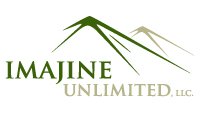That person is like a tree planted by streams of water, which yields its fruit in season and whose leaf does not wither – whatever they do prospers.
– Psalms 1:3 (NIV)
Are you prospering? Have you felt connected, nurtured and successful with the team of people and organization around you? The above quote reminded me of the Redwood trees on the Pacific coast of the United States. They are massive trees that grow to great heights and live for hundreds of years. And one of their secrets to success is their root system, which is a web. The trees grow their roots together to provide an expansive foundation that keep the trees growing upright and healthy even through the massive storms that come across the Pacific.
As leaders we also are part of a web, which is our organization. Our organizations provide a structure and support system to reach our mission. I have recently read a book called Reinventing Organizations by Frederic LaLoux that caused me to reflect on the structure of organizations.
In the first part of the book, he discusses the progression of organizations throughout history and identifies characteristics of specific models of organizations. All these types of organizations exist today, but do we take the time to be aware and identify the kind of organizational model in which we are working? After identifying it, does the model resonate for you and is it working for the success of your organization?
Overview of Organizational Models
LaLoux uses colors to categorize the models. Here is a brief overview:
Red Organizations – In this type of organization, there is an identified person with all of the power. It is a culture led by fear. You can often see it in chaotic environments. Street gangs can be an extreme example of this model.
Amber Organizations – This model is based on a hierarchical pyramid. There is a person at the top with defined levels of power throughout the system. There are defined processes that control the what and the how. Examples can be the military, most governments, and public schools.
Orange Organizations – The focus of this model is achievement. There are defined objectives with command and control of what to achieve but freedom with the how. The culture is driven by competition and to attain growth. You can often see this type of model in multinational companies.
Green Organizations – This type of model still has the pyramid of hierarchical structure but with a values driven culture. There is a focus on empowerment and motivation of employees. It can have a family focus to it. Examples of this include culture driven organizations, such as Southwest Airlines or Ben and Jerry’s.
Teal Organizations – This type of model is currently emerging. It is a focus on self-management that does not have a system of hierarchy nor depends on consensus. It is model based on peer relationships, where people bring their whole selves. Instead of a focus on controlling the future, they listen, understand, and respond to the purpose they serve. It is an agile and evolutionary system. There are organizations already operating in this model from small size teams to companies with thousands of employees.
Reflecting on Your Organizational Model
So, what does the “web” in your organization look like? There can be different kinds of organizational models that fit a variety of purposes. The model you are in may work for you and is being effective to help reach your mission. But it is always beneficial to take a step back and reflect. Is your organizational model helping you to meet your mission, vision and future? Does it fit who are as a person and your values? Is your model being effective or does it need to adapt?
